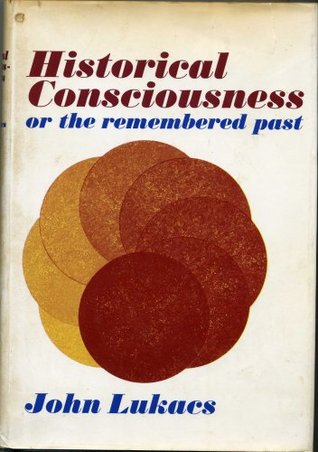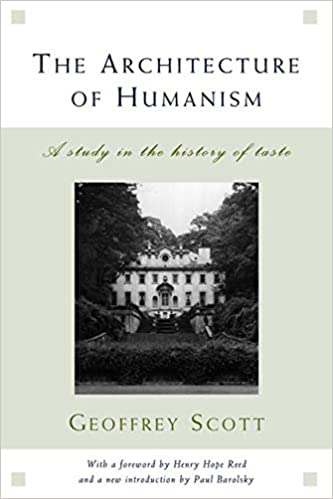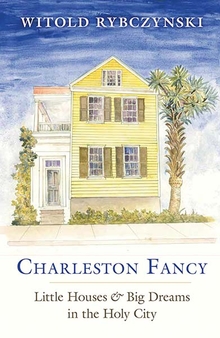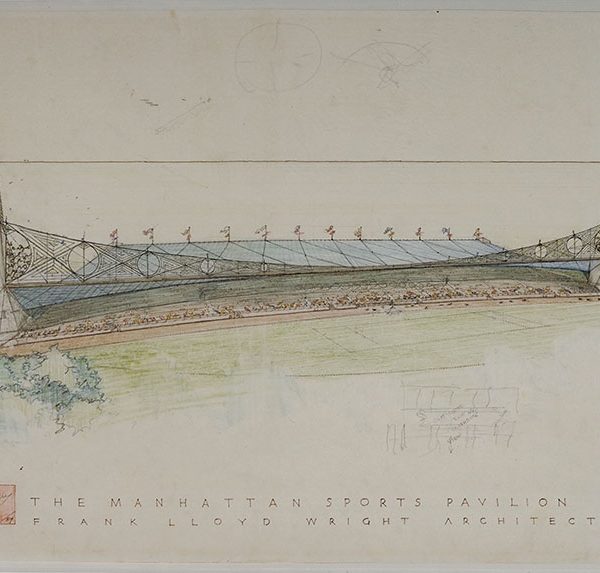A Personal Canon: Witold Rybczynski on Five Influential Texts
The five titles I have chosen are a mixed bag, but then so are the more than twenty books I have written over the last four decades, covering architecture, furniture, tools, urbanism, real estate, history, and biography. Yet when I look at my library, much reduced since our last downsizing move, I see more fiction than non-fiction. And many travel books—I learned much about expository writing by reading V. S. Naipaul, Paul Theroux, and Jonathan Raban. The five books below were important to me when I was setting out, trying to make my way. Not really a canon—more like primers.
John Lukacs, Historical Consciousness; or, The Remembered Past (1968)

I got to know Lukacs well after we moved to Philadelphia, but his book that made the greatest impression on me was one I encountered in Montreal, when I was writing my first book, Paper Heroes. Lukacs’s thesis was that consciousness of history was a human invention. I used a quote from the book as the epigraph to my first chapter—“There is no human problem, indeed no field of human endeavor, that may not be approached profitably through its history.” That sentiment has influenced my writing ever since. I was also taken by Lukacs’s prose: lucid, combative, iconoclastic, the work of “a reactionary rather than a conservative” as he put it.
Johan Huizinga, The Waning of the Middle Ages (1919)

Lukacs’s characteristically discursive footnotes led me to other historians: Hobsbawm, Ariès, Praz. The Dutchman Johan Huizinga was one of the founders of modern cultural history and I was attracted to his fusion of anthropology and history, especially the history of popular culture. Huizinga had the rare ability to evoke the past, not with hindsight but through the eyes of those who lived it. This seems obvious but it is an important distinction. It led me to the conclusion that history is characterized not by inevitability but by chance, and not by cause and effect but by an open—and unknown—future.
Fernand Braudel, Civilization and Capitalism, 15th-18th Century, Vol. I: The Structures of Everyday Life (1967)

Fernand Braudel’s magisterial work on civilization and capitalism was my touchstone, especially the first volume, and especially his observations on cities and urban life. Braudel’s approach to history was to examine the big picture, especially the big economic picture. The notion that major forces such as economics, climate, and geography influence every aspect of everyday life was particularly convincing, especially in the case of cities, which are the largest human artifact and the longest lasting. Architects often focus on urban form—buildings and streets—but Braudel’s writing helped me to see these forms in a larger, human context. Perhaps that’s why I titled my first book on the subject, City Life.
Lynn White, Jr., Medieval Technology and Social Change (1962)

I have written a lot about architecture, both books, magazine and newspaper articles, and online posts, but I must confess that there are few books on the subject that I could cite as an influence. Lynn White, Jr. was not an architectural historian, but I found his work on the effect of apparently unimportant technological devices on warfare, agriculture, and everyday life, compelling. There was a “for want of a horseshoe nail the kingdom was lost” quality to his writing that appealed to me. What was particularly striking about White’s descriptions of medieval inventions was their unpredictable effects. This was as much true of the stirrup—one of his memorable examples—as of eyeglasses and the printing press.
Geoffrey Scott, Architecture of Humanism: A Study in the History of Taste (1914)

Books by architects are generally untrustworthy—and these days often weighed down by jargon that makes them almost unreadable. Geoffrey Scott’s Architecture of Humanism is not like that. Scott had experience as both a writer and an architect, and his book, which raises important issues about the art of building, is a delight to read. Scott was an aesthete. He was critical of over-intellectualizing architecture, and he distinguished between the mechanical art of construction, and the aesthetic art of architecture. He was a devotee of the Baroque—at a moment when architectural modernism was rearing its head. That made him a reactionary and a conservative.
Witold Rybczynski is an architect and emeritus professor of urbanism at the University of Pennsylvania. He is the author of numerous books, including Charleston Fancy: Little Houses and Big Dreams in the Holy City. Click here to read an excerpt from the book, which is now available in paperback. On February 25th, 2021, Professor Rybczynski will give a Zoom talk, “Locatecture in the City,” based on this book — click here for more information and to register for the talk.

Bibliography
Braudel, Fernand. Civilization and Capitalism, 15th-18th Century, Vol. I: The Structures of Everyday Life. Paris: Colin. 1967.
Huizinga, Johan. The Waning of the Middle Ages. Haarlem: H. D. Tjeenk Willink & Zoon. 1919.
Lukacs, John. Historical Consciousness; or, The Remembered Past. New York: Harper & Row. 1968.
Scott, Geoffrey. Architecture of Humanism: A Study in the History of Taste. London: Constable. 1914.
White, Lynn, Jr. Medieval Technology and Social Change. London: Oxford University Press. 1962.

























